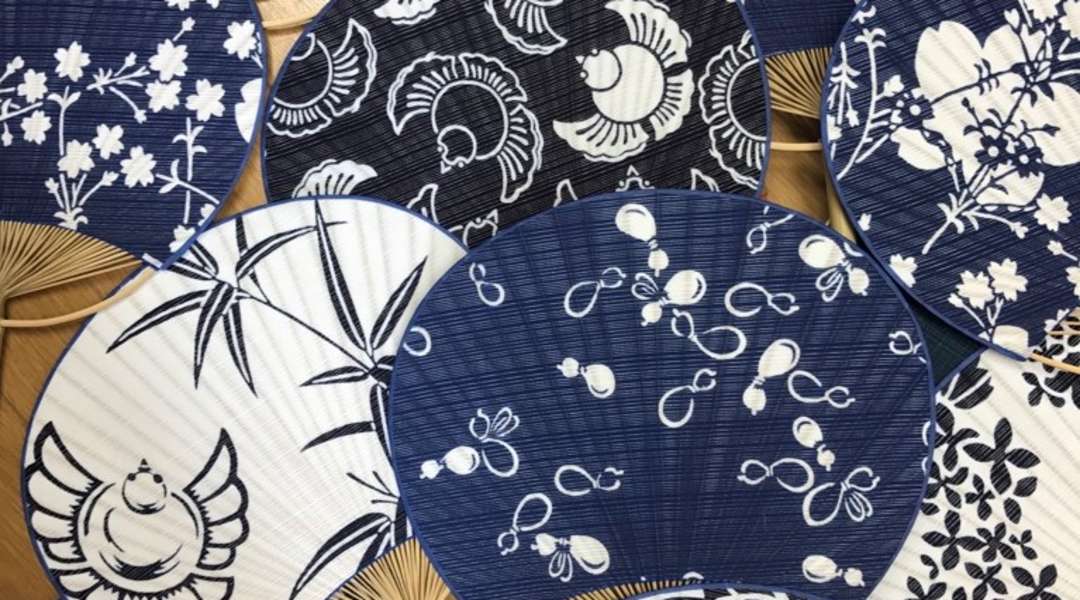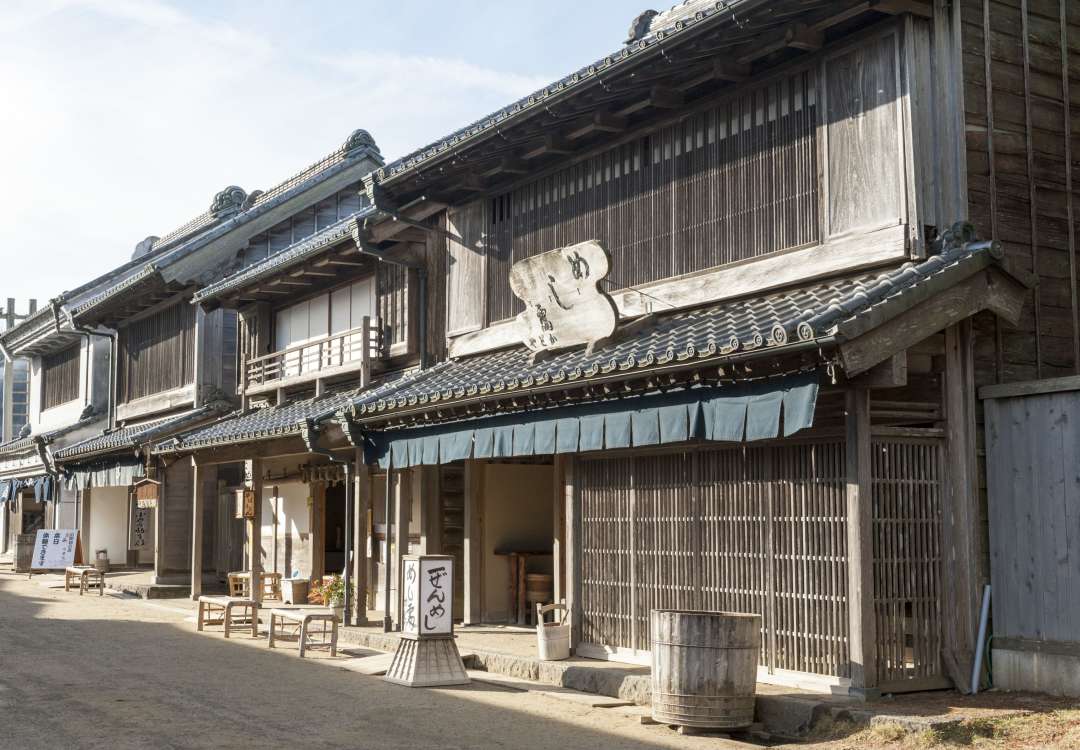
Summer in Japan. With beautiful skies and lush greens comes heat and humidity, which has in turn made ‘Uchiwa’ handheld fans an absolute necessity. Originally made from leaves or animal hair, throughout recent history they were regularly used for purification purposes in religious ceremonies (and indeed are still seen as decoration in temples).
But nowadays, they have become synonymous with the arrival of summer - fireflies, fireworks and exhilarating festivals - and make popular gifts.
Such is the artistry involved in the making of fans that they’ve been recognised as National Cultural Heritage, and we spoke to a 4th generation maker of Boshu ‘Uchiwa’ fans to find out what goes into it, how the past few months have been in Chiba, and what the word ‘Kizuna’ means to her.

Hi Ota-san! Thanks so much for taking the time. Could you tell us a little bit about yourself and your company?
My name is Mitsue Ota and I was born and raised in Minamiboso city, here on the southern tip of the part of Chiba prefecture that juts into Tokyo Bay. I’ve had a close bond with the art of making ‘Uchiwa’ fans ever since I was a child, really.
As for my business, Uchiwa-no Otaya (Otaya), we used to make a specific type of Edo fans in Tokyo but as a result of World War II many craftspeople and workshops came across to the Boshu region we’re located in now, largely because of all of the bamboo that is grown here. I now spend my days going about the daily business of an ‘Uchiwa’ fan maker as the 4th generation owner of Otaya.

What’s special about the type of fans that are made in the Boshu area?
We make them using one thick piece of bamboo for the handle and then cross and layer up bamboo strips to make what’s called the ‘window’, or the beginning of the flat part of the fan. It then has a nice flexible bend to it, and means it produces a pleasant gentle breeze.
What does your average day look like?
Before COVID-19 hit, I’d spend my mornings making deliveries to shops and other people involved in the fan-making process, and then spend my afternoons concentrating on making but now the delivery aspect of my daily tasks has dropped off quite a bit.
Could you tell us a little more about how long it takes to train to become a producer of ‘Uchiwa’ fans? We’d be interested to learn how long an ‘Uchiwa’ fan can last, too.
In terms of training, it’s a never ending process. I’ve been involved in making ‘Uchiwa’ fans for over 40 years now, and officially took over the business close to 20 years ago but I would say I’m still training, and will still be training from here on out, too.
But the fans themselves generally last about 10 years, depending on how you use them, of course. If you’re looking after them properly, they could last you more than that. For example, I gifted one to a visitor we had from abroad, something like 25 years ago and they chose to use it as decoration that has remained intact to this day!
How about the actual process of making an ‘Uchiwa’ fan?
When it comes to the process of making the fans, there are a total of 21 steps involved so it’s very much an assembly-line production involving lots of specialists.
Chopping, whittling, polishing, soaking, snapping, massaging, drilling, bending, hollowing, setting, threading, roasting, fastening, threading, painting - the list goes on and on!
Each of those stages requires very neat and precise work in itself.
Wechat about life, we swap flowers and vegetables that we’ve each picked from neighbouring fields. We don’t really see each other as colleagues in a professional sense, more as humans interacting with humans. Nurturing those relationships is what makes the production process comforting and rewarding. I think it’s incredibly important to think of it in terms of a group of equals facing something together rather than the people who ask for favours and the people who get asked for favours.
Since our foundation in 1856, there has really been little change to our production process. The only mechanised bits are the tools we use to clean the bamboo and to make the holes in the handle - the rest is all completely done by hand.
What is the hardest part of the process, do you think?
Because it’s all an assembly-line type situation, you need the skills of a different specific craftsperson at each specific stage. Oftentimes one person will take on several different non-sequential roles, like we do at Otaya, so it regularly ends up with a group of about six or seven people undertaking the 21 stages together.
Where can people buy Otaya Uchiwa fans in Japan?
A couple of different places. You can buy directly from us here in Minamiboso at Uchiwa no Otaya. We’re generally open from 9:00 - 18:00 and we ask for you to call ahead, if possible.
But if you can’t call ahead, you can also buy our products at a couple of roadside stop off points like Michinoeki Tomiura or Michinoeki Furari Tomiyama. We also sell at the Hoda Shogakko Rest Area nearby.
This month, we’re looking at the concept of ‘Kizuna’, or ‘bonds’ and what it means to people on a personal level, but what would you say your relationship with that word is?
As I say, the process of ‘Uchiwa’ fans requires a network of moving parts so without mutual understanding and trusting relationships it just wouldn’t work. That’s how I really see and experience ‘Kizuna’.
But above and beyond that, there’s a long tradition of ‘Uchiwa’ fans, made with care and attention, being used as offerings to ancestors during O-Bon season, or given as thank you gifts at celebrations. In that sense, the fans themselves are in their small way key to the process of building ‘Kizuna’, and deepening ‘Kizuna’.
What are your goals going forward?
Quite simply, it’s to help bring more interested people to discover Boshu ‘Uchiwa’ fans.
You’re currently operating in Minamiboso City, but how have you been affected by the current situation where you are?
You certainly notice that there are fewer tourists about but we’d really love for people to come and visit, once things are back up and running. I’ve heard Chiba prefecture is the originating region for dairy farming in Japan, and we have plenty of delicious fish, seafood and natural produce, too. So many delicious things in one place.

What would you recommend about where you’re based to anyone visiting from the UK or Europe?
Maybe the fact that it’s quiet, peaceful and there’s not a lot here - in the good sense! The parts of Minamiboso that look out over the sea, particularly around Uchibo, have stunning sunsets and, depending on the weather, you can also see Mt Fuji! Otherwise, Cape Taibusa, the Haraoka Bridge (very popular photo spots) and the Kannon statue in Tateyama would be my recommendations.
To stay up to date with all the latest happenings in Japan follow us on Facebook or Twitter.

















































